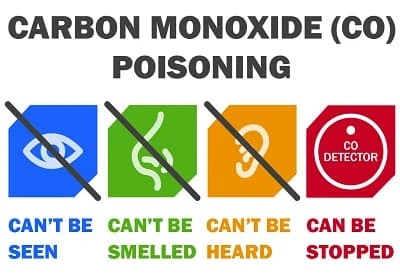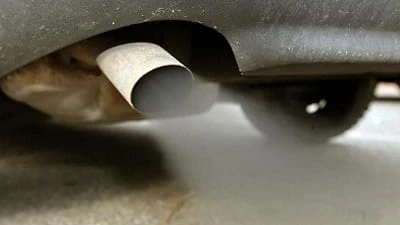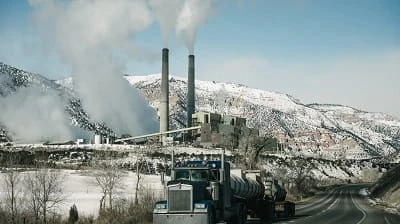by Rick Goldman
Carbon Monoxide is widely known as the “Silent Killer.” The poisonous gas has no scent, no color, and no warning before it takes the life of a person. Many homes come equipped with some version of a carbon monoxide detector, and many people shrug them off as unimportant or unnecessary. However, these alarms could save you and your family from a potentially fatal situation.
In the United States, approximately 400 people die from accidentally inhaling carbon monoxide. According to the National Fire Protection Association, NFPA, there were 72,000 reported non-fire carbon monoxide incidents reported from 2006 to 2010, showing a steady increase over time. In 2003, there were approximately 40,900 reported non-fire carbon monoxide incidents, while close to 80,100 incidents were reported in 2010. The majority of these incidents occur in one or two family residential properties.
According to the NFPA, most carbon monoxide incidents are reported in the evening hours between 5:00pm and 9:00pm, after most families have returned home for the day. Carbon monoxide incidents are most common during the months of December and January, with February and November close behind. Summer months tend to see a drop in carbon monoxide related incidents, due to less people utilizing heat sources that produce the toxic gas.
Contents
In a study published by the Center for Disease control, CDC, it was found that across all age groups, men were more likely to die as a result of carbon monoxide poisoning. The CDC’s study found the average annual number of deaths from 1999-2010 for men and women in four different age groups. In the 0-24 year age range, an approximate 40 males and 20 females were killed each year as a result of carbon monoxide. In the 25-44 year range, close to 100 men and 20 women were killed each year. Adults aged 45-64 saw an estimated 110 men and 30 women pass each year, while the 65+ age range saw around 70 men and 40 women die form carbon monoxide each year.
Effective carbon monoxide detectors, like the ones offered by Crossfire Alarms, alert us when carbon monoxide gets to a dangerous level. To protect your family, it is important to take the right steps. Have your heating system, including vents and chimneys, inspected each year and have all repairs made immediately. Never bring charcoal grills or portable generators inside of a home or garage. Do not use ovens or stoves for heating. Make sure your fireplace flue is open before lighting a fire in your fireplace. Symptoms of carbon monoxide poisoning include headache, fatigue, nausea, dizziness, and shortness of breath. Vomiting, mental confusion, loss of coordination and loss of consciousness can all happen at extremely high CO levels.
Carbon monoxide may not seem like a common issue, but it is a danger that can affect every single home. It is important to do as much as you can to keep your home safe, including equipping your home with reliable carbon monoxide detectors. The more you do to prevent carbon monoxide poisoning, the less likely you are to become another statistic.

If you’re aware of the dangers of carbon monoxide poisoning, and the reasons why it’s often referred to as “the Silent Killer”, then you may also wish to know what things can cause carbon monoxide to become present in an environment. Because we take carbon monoxide and its detection so seriously at Crossfire Alarms, we thought that we’d take this opportunity to educate the public on the different things that can create carbon monoxide during operation.
In general, any piece of equipment that relies upon combustion to operate can be a potential source of carbon monoxide. According to the Mayo Clinic, these are the most common sources of carbon monoxide in your home or place of work:
Because any of these pieces of equipment can be a potential source of carbon monoxide, it’s important that they’re checked regularly to ensure that they’re operating properly. If any of these devices is potentially creating a carbon monoxide leak, the consequences can be disastrous and fatal.
In order to properly protect yourself from the many dangers of carbon monoxide poisoning, it’s important that you have carbon monoxide detectors and alarms present in your home and place of work. If you haven’t installed carbon monoxide detectors and alarms, then please reach out to Crossfire Alarms today. The ones that we’ve manufactured are truly state of the art, using multiple forms of detection and wireless communication. Their presence in your home or workplace could be the difference between life and death.

If you’ve never heard of carbon monoxide poisoning before, then listen up! It can have disastrous health consequences, and if it’s not detected early enough, it can be fatal. That’s why we take carbon monoxide poisoning very seriously here at Crossfire Alarms, and it’s why we wanted to take this opportunity to warn you about the symptoms you can look for.
If you suspect that someone around you is suffering from carbon monoxide poisoning, the symptoms will likely include the following:
Of course, these are rather general symptoms that one might experience from carbon monoxide poisoning, and they could be the result of something else. For this reason, you’ll have to also consider the circumstances when determining whether or not someone is suffering from carbon monoxide poisoning.
In general, you can expect carbon monoxide to present around any device or piece of equipment that requires combustion to operate. This is why, for example, cars are a frequent source of carbon monoxide. In addition, generators, grills, and gas ranges and stoves can be sources of carbon monoxide. If any of these devices is operating incorrectly, or is being operated in a poorly ventilated area, then carbon monoxide poisoning could be possible.
Of course, the only real way to know if carbon monoxide poisoning is happening is to use a detector. If you don’t already have carbon monoxide detectors installed in your home or place of work, then why not purchase one from Crossfire Alarms? Ours are state of the art, and they can adequately protect you from even having to experience the symptoms of carbon monoxide poisoning in the first place.

The Occupational Safety and Health Administration (OSHA) has some useful tips for employers and employees alike to help prevent carbon monoxide poisonings from occurring in the workplace. In order to better educate our customers about the ways that they can prevent carbon monoxide from ever getting to dangerous levels, we thought we’d pass some of their recommendations along.
For Employers:
For Employees:

Carbon monoxide, also known as “the Silent Killer,” doesn’t discriminate based on borders or nationalities. Its dangers are ever present, no matter where you’re located in the world. Recently, according to the Daily Mail, an incident in Britain nearly claimed the lives of three elderly individuals. According to the report, they had been grilling indoors, when the carbon monoxide fumes created a situation wherein they were incapacitated. They might have lost their lives if not for another individual, who was himself overcome by the fumes, miraculously having the wherewithal to contact the authorities, even in his confused state. Even more miraculous: the individuals were saved by the quick and decisive work of police offers, who entered the building to save those individuals at their own peril. The officers themselves had to be treated for the acute effects of carbon monoxide poisoning as the result of their heroic effort.
We’re thankful to read that no one lost their lives, but again we at Crossfire Alarms find ourselves scratching our heads. Even though the dangers of carbon monoxide poisoning are well known throughout the world, a few people still fail to employ carbon monoxide detectors and alarms within their homes and places of work. There’s simply no need for it, especially when one considers how unlikely it is that someone suffering from carbon monoxide poisoning can have the wherewithal to call for help, as was the case in the above incident.

If you’ve been keeping up with the news lately, you may remember that water pipe break that occurred in Los Angeles. It was a terrible tragedy for the community, one that only exacerbated the unprecedented drought that the region has been experiencing. Even more, it caused significant damage to surrounding properties, including the Pauley Pavilion at UCLA.
Now, you may be asking yourself, “Why is a company that manufactures carbon monoxide detectors talking about flooding in Los Angeles?” As part of the clean-up efforts at Pauley Pavilion, six people had to be hospitalized as the result of carbon monoxide poisoning, according to a report by KPCC. It seems that they were operating a portable generator in an indoor space, and that the generator didn’t have adequate ventilation to the outdoors. Thankfully, the effects of carbon monoxide poisoning were immediately identified, and those six individuals got the medical attention they needed.
This incident highlights a couple points we’d like to make about carbon monoxide and carbon monoxide poisoning. No doubt you’re one of many families who’s invested in a portable generator in recent years, given all of the terrible weather that the country has been experiencing. If this is case, then make sure that you NEVER use that portable generator indoors. These generators create significant levels of carbon monoxide around them, and can be quite deadly if operated in this fashion.
Also, remember that the dangers of carbon monoxide are everywhere, even in a situation like the one above. For this reason, we recommend that you protect yourself and your family with a carbon monoxide detector and alarm. Because the effects of carbon monoxide can be subtle before they become fatal, this is the only way to properly protect yourself from possible loss of life. So, don’t put yourself and others at risk for carbon monoxide poisoning

 |
 |
 |
 |
 |
 |
 |
 |

About Rick Goldman
Rick Goldman's grandpa was a captain of a California coast cruise. This afforded Rick the luxury of traveling to exciting places along the Pacific Coast as a young boy. He got to try different, exotic foods on these journeys - something he really enjoys blogging about from his grandpa's beautiful garden home today.
Check for FREE Gifts. Or get our Free Cookbooks right now.
Disable the Ad Block to reveal all the recipes. Once done that, click on any button below
 |
 |
 |
 |